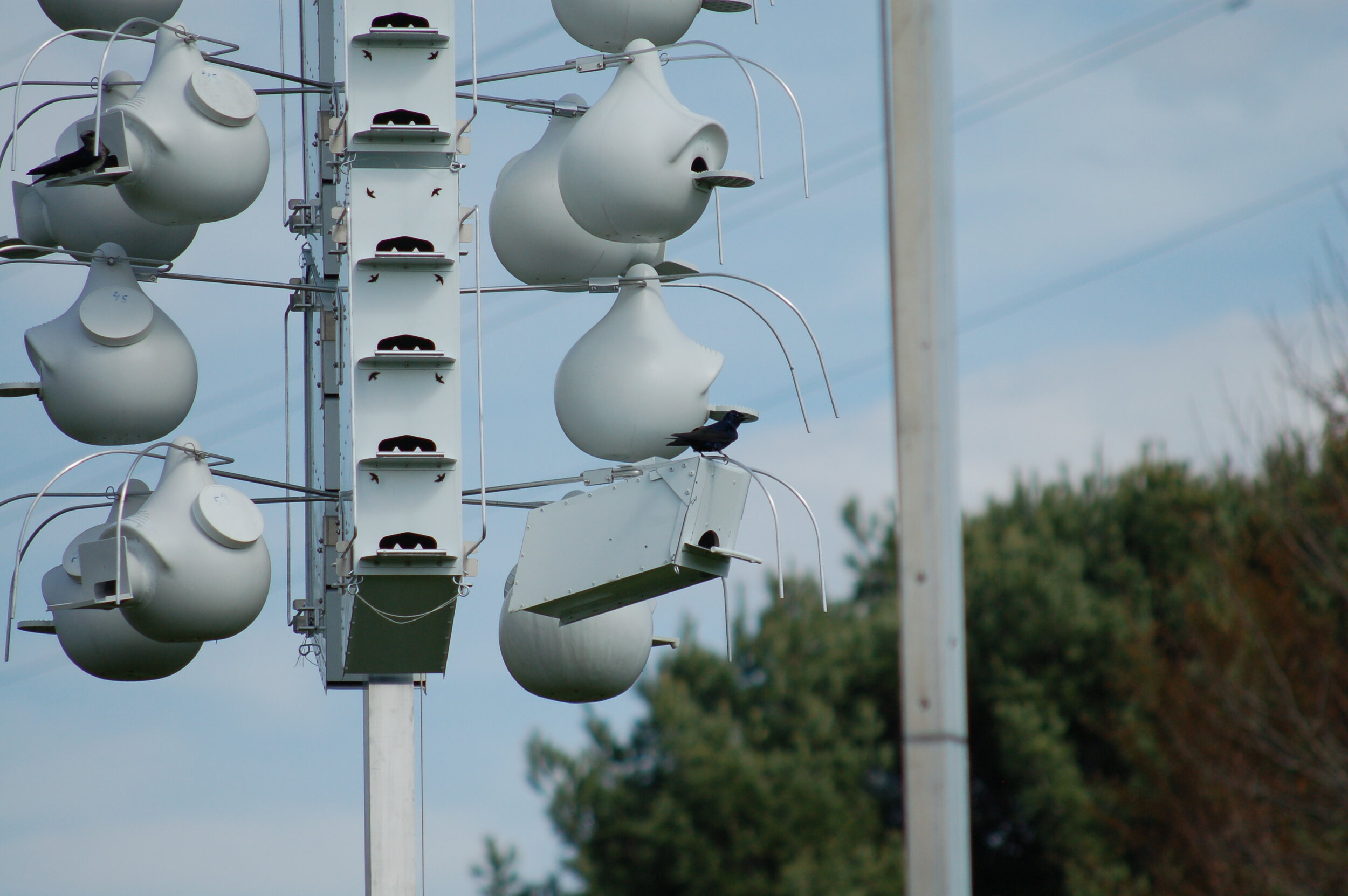Being just weeks away from the 2020 season I am excited for martins to return to my home colony. Even more so I am looking forward to hear from landlords that have added ChirpyNest too their site and to see how the birds take to their new modern cavity. I get to experience the thrill of the first arrival many times over both before and after my first birds arrive.
In the summer of 2015 I spent many hours thinking and build the first prototypes. That winter I built the first ChirpyNest houses, the four compartment stack house pictured below. My intent was for this to be the ChirpyNest house I would offer for sale to other landlords looking for a better system. From some left over parts, I fabricated one single ChirpyNest that I added to my rack just for fun. My first Martin showed up on March 16 that year and hung around for a short time. I was all nerves that spring because I didn’t even know if martins would use the design I had spent so much time developing. Eight days later a couple of martins showed up. When this ASY male landed on my house I could barely hold my excitement. When he later landed on the single unit all the work was rewarded. I still had a long season ahead and still didn’t know if the birds would use the housing but just having them on the house was enough.
As the season got going all my worries and wonders subsided as 12 of the 33 ChirpyNest cavities offered that season were claimed and had eggs laid, including the one single unit. It wasn’t long into the season that I abandoned the further development of the stacked ChirpyNest in favor of the single units. The adaptability and versatility of the single made it much more practical. I also found that the martins would claim multiple cavities in the stacked units, laying a single egg but not incubating it. This is common in multi cavity housing. I learned the long way that individual cavities was a better way to go.
2020 starts the fifth year for ChirpyNest at my colony. It is the third year for landlords in other parts of the Martin’s range to be using ChirpyNest. Over 100 sites are using ChirpyNest as of today. Some have one or two and some have over 25 ChirpyNest cavities offered. I ask and hope that all of you will let me know when your martins arrive and when they check out your ChirpyNest.
I’m counting down the days to my first arrival and anxious to hear from ChirpyNest landlords down south to let me know when their martins check out their ChirpyNest. Nothing beats the arrival of the first Martin, but hearing of the first martins to check out ChirpyNest at sites across the country comes close.
This is the first Purple Martin to ever visit a ChirpyNest house.
March 24, 2016. First visit to a single ChirpyNest house
























